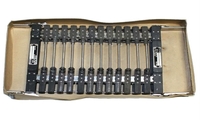Introduction
 DPH Engineering are Authorized Distributors of Flow Control Chutes. DPH Engineering has always been a big proponent of the use of Flow Control Chutes as a means of preventing wear, where the turbulence created by a normal chute enhances the already present dust and wear problems, instead of steadily directing the flowing the material in a much calmer, smoother manner conducive to proper material handling. DPH Engineering believes that the WEBA Designed Chutes are the very best engineered chutes in the world. Flow control chute or passive chute designs can make great improvements in reducing dust levels. However, there are some drawbacks, including cost and available real-estate to locate these types of larger chutes. At DPH Engineering, we provide chute designs that increase the life expectancy of conveyor components, reduce downtime and minimise maintenance costs.
DPH Engineering are Authorized Distributors of Flow Control Chutes. DPH Engineering has always been a big proponent of the use of Flow Control Chutes as a means of preventing wear, where the turbulence created by a normal chute enhances the already present dust and wear problems, instead of steadily directing the flowing the material in a much calmer, smoother manner conducive to proper material handling. DPH Engineering believes that the WEBA Designed Chutes are the very best engineered chutes in the world. Flow control chute or passive chute designs can make great improvements in reducing dust levels. However, there are some drawbacks, including cost and available real-estate to locate these types of larger chutes. At DPH Engineering, we provide chute designs that increase the life expectancy of conveyor components, reduce downtime and minimise maintenance costs.
Types of Flow Control Chutes:
- Cascade Style Chute – the Cascade Style Chute unit which utilizes a “Material on Material” approach along with dynamic flow engineering to vastly extend the life of a transfer chute
- Super Tube Chute – Super Tube Chute type of Flow Control Chute is a more conventional style of Lined Chute, in that it utilizes hardened wear liners within the chute to absorb the impact and abrasion from the flowing material.
The Design of any type of conveying system must meet two basic requirements:
- The system objectives – in terms of capacity, conveying distance, product distribution, and so on.
- The characteristics of the bulk solids product in terms of flow properties, degradation limitations, abrasion resistance of chute materials, and so on.
To meet the process objectives the conveyor system will require a number of transfer chutes.
Why Use Chutes?
Chutes are used at conveyor transfer points for a number of reasons:
- to control the direction of flow of the product
- to control the shape of the flow stream
- to control spillage
- to control dust and environmental pollution
- to reduce product degradation
- to retard or control flow
- to provide surge control
